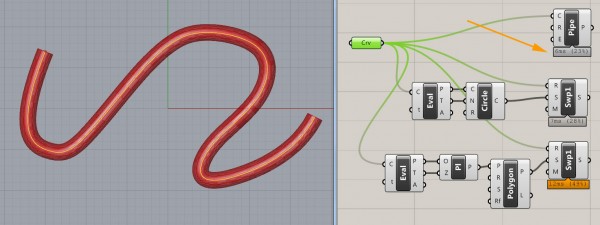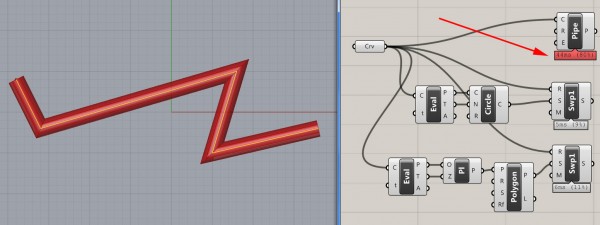A Tip About Using Pipe Component
While looking at the student works of my 2009 class, I realized that in some cases, the “pipe” component takes a considerable amount of time to execute even on fast computers. Students mostly create pipes to model structural frame systems such as canopies and facade frames. Therefore, the path of the pipe is usually linear (not curved). I decided to calculate the performances of three approaches that could be used to make pipes in Grasshopper. One was the good old Pipe component, the second was a sweep component with an aligned circle, doing the same job with the pipe, and the third one was a polygon sweeping, checking if the time problem is caused by the shape of the profile. Don’t think I have plenty of spare time, I just can’t control my curiosity. The results are interesting though;
On curved paths, the pipe component is working faster than both of the sweeping methods. The results change on every curve (and for the copies of the same curve also) however the overall result is clear that pipe is the champion in this field. That was predictable of course;
However, when I tried polyline paths instead of curves to create straight pipes, the performance problem of the pipe component was revealed. Again, the results vary by the size and shape of the path, but the two sweeping methods are mostly faster than the pipe component.
Conclusion: If you have lots of paths to create pipes, then you’ll face a performance issue with them. It is advised to use “pipe” for curved paths, but use the “sweep” components for linear ones.










